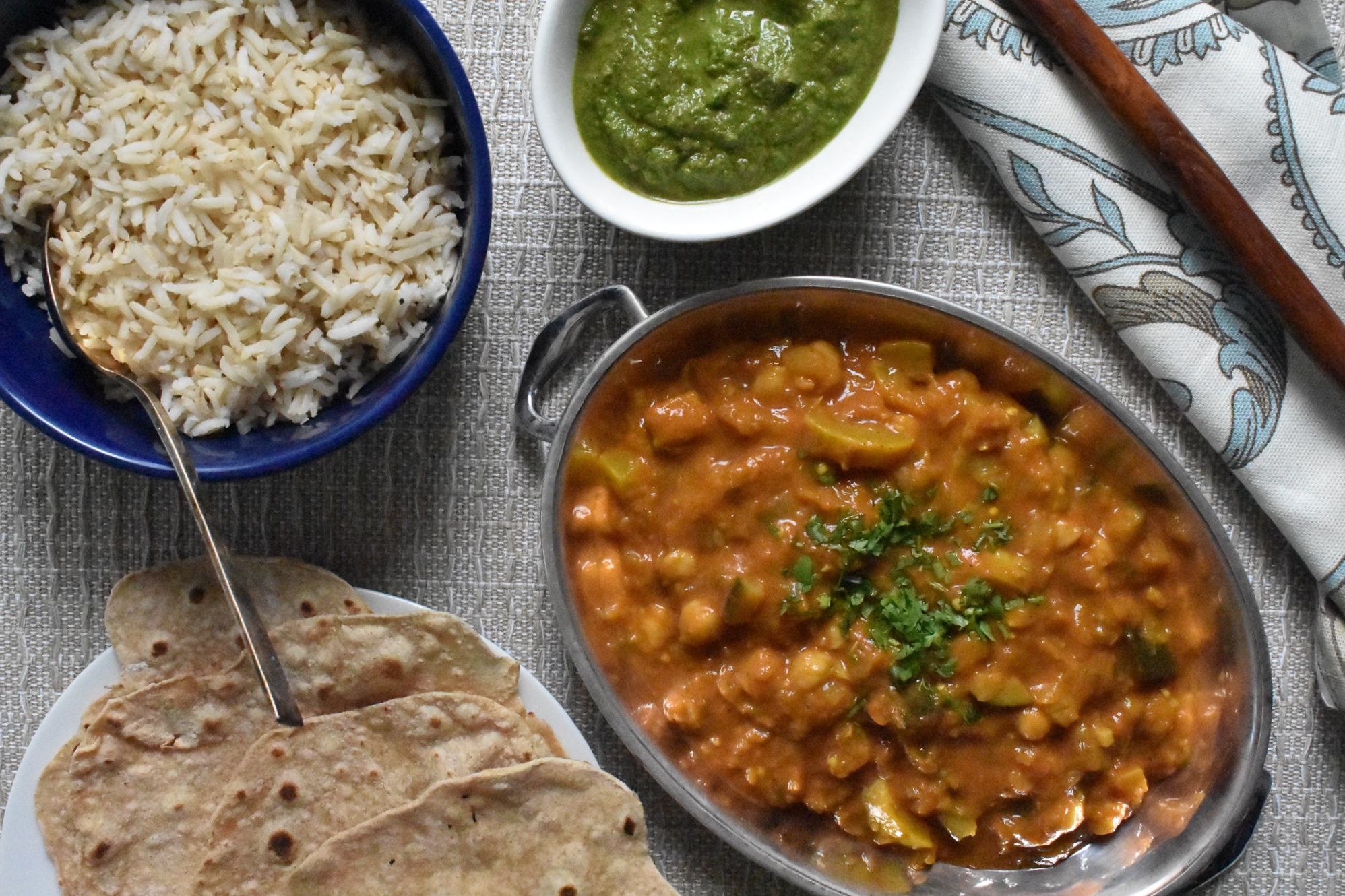The difference between Indian and Thai curries
Indian curries
Indian curries’ velvety texture comes from longer cooking times. The ingredient list usually includes a lot of dry spices that blend into each other and make for ultra-satisfying flavors. You can control the spiciness level through the use of more or fewer chilis, the type of chili powder you use, and by leaving in or cutting out the seeds and veins from the chilis (the seeds and veins contain the most heat).
Main characteristics of Indian curries:
Dry spices (coriander, turmeric, cumin, cardamom, black mustard, dried chilies, etc.)
More like a stew than a soup
Simmered longer
Served with basmati rice
Thai curries
Thai curries have a brighter flavor and soupier consistency, because they use lots of fresh herbs and are cooked for less time than Indian curries. It’s worth your time stocking up on some of the unique ingredients — you can freeze herbs like lemongrass and kaffir lime leaves for multiple future uses.
Main characteristics of Thai curries:
Fresh herbs and chilies (lemongrass, galangal, garlic, shallot, kaffir lime leaves, cilantro stems, etc.) — most cooks use store-bought curry pastes along with some fresh herbs
More like a soup than a stew (usually made with coconut milk or other creamy liquid)
Shorter cooking time
Served with jasmine rice
Make some!
Here are my favorite Indian curry recipes:
And here are my Thai curry recipes. Note that I try to keep my intake of saturated fat down, so I’ve replaced coconut milk with fresh cashew milk. You save 12 grams of saturated fat per serving, about the same amount as in a Burger King Whopper.


